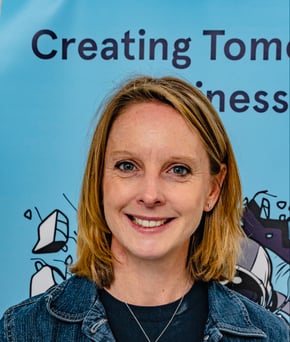Marty Cagan's latest book, Transformed, along with its accompanying 'spicy' podcast tour, has stirred quite a reaction. While some honed in on the critique of feature team product managers, product ops as a function, and agile coaches (and got a little defensive), I found myself in vehement agreement with what Marty and his colleagues explained so simply.
Moving to the Product Operating Model unlocks enormous value and is the light on the hill that we should head toward.
I'm also a pragmatist. It's a lot easier said than done. Organisational context is everything.
The leaders that we need to influence want to be confident that they are not unleashing chaos. They all come to the party with different experiences, mindsets and agendas. As a result, we need to be super transparent, over communicate and put in place right-sized governance along the way.
So indeed, some process helps with managing the change. Thinking about process with principles in mind can actually help deliver the cultural change, which is what is really needed to ensure that the transformation succeeds in the long term.
What do we see in organisations working in the feature team model?
Let's take it back a step and talk about why we are even writing about this. The reasons for embarking on a transformation are compelling.
These organisations are quite often working to create and enhance products using the feature team or delivery team model.
This is what we see in organisations who haven't transformed.
- Siloed, slow decision making and frustrated business leaders
- Lack of innovation, falling behind the competition
- Inability to respond quickly to market changes
- A focus on output holding back real value creation
- Products or features not hitting the mark
- Low team engagement and motivation
Combine clarity and alignment with a cultural shift
Because analogies are fun, one way to think about transformations is as an iceberg. The visible 20% above the water includes your vision, strategy, roadmap, and success measures — super important for creating clarity and alignment.
However, the enduring change comes from the 80% below the surface. This is where cultural changes, practices, and principles need to be deeply embedded.

Key principles (with a dash of process) for enabling the cultural change
- Customer Centricity - undertanding the problems you are solving and what your customers or users are trying to achieve. There needs to be a strong and visible feedback loop so it's not just a case of loudest voice driving the roadmap. A process can help here.
- Outcome Over Output - check the language you use, measure the right thing, not the thing that is easy to measure. What does it look like when your users are getting value from your product?
- Continuous Discovery and Delivery - adopt a mindset and a process that ensures learning and validating assumptions through user testing and iterative releases. Frameworks help. Use assumption mapping to clarify where to focus. Put in place practices that ensure you are reducing risks early - apply structure to the thinking.
- Leadership and Vision - have a vision and a way to share context often.
- Have a one-pager that is a living and breathing document. Update it as you experiment and learn. Include your target user, data and insight, the problem and solution ideas, risks and assumptions and how you will measure success.
Capability Matters
The reality is, the role of a feature team product manager takes different skills to an empowered product manager. Marty covers this extensively in Transformed. Calling out a few areas that are often lacking.
- Strategy: How to develop a clear, coherent, and well-communicated strategy that guides all efforts.
- Discovery: Continuously understand customer needs, market conditions, and emerging opportunities. Ensuring you build the "right" thing.
- Delivery: Frequent, uncoupled releases. Tech debt, test automation.
Make it Stick
I love the suggestion in Transformed about conducting Culture Retrospectives. These sessions help you check progress, celebrate successes, and identify areas for improvement. They ensure that the cultural shift remains an ongoing process, not a one-time event.

